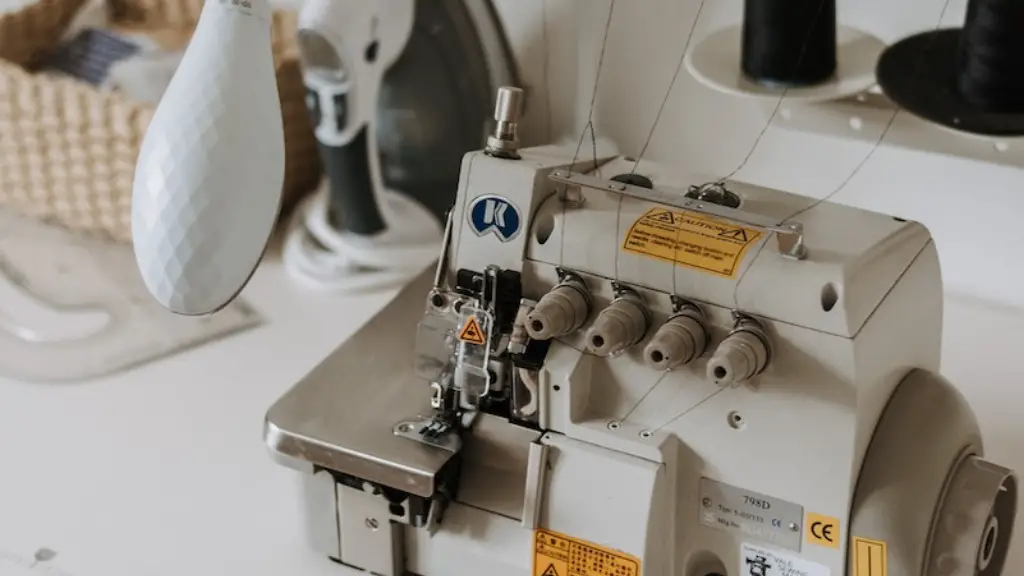How Sewing Machines Work
Sewing machines are a popular and versatile tool for crafting, but knowing how to maintain them and how often to service them is key to getting the longest life out of them. To understand how often to service a sewing machine, it helps to learn a little about how they work.
Sewing machines use an electric motor to power a pair of needles as they move a thread through fabric layers. Underneath, a shuttle moves a second thread through the layers of fabric, creating a neat stitch. The pressure on the fabric is regulated by a presser foot, and the tension in the threads is regulated by a bobbin case.
How Often Should a Sewing Machine Be Serviced?
It’s recommended that sewing machines are serviced every 6 months to a year, depending on how much they are used. Professional sewers who use their machines daily should get them serviced more regularly. Even if a machine isn’t being used much, it should still be serviced every year or eighteen months to ensure that the moving parts still work properly.
Regular service will ensure that the machine continues running smoothly and efficiently, and that any potential problems are identified and fixed before they can cause serious damage. Some sewing machines come with warranties that require annual service in order to keep them active.
What to Do When an Unusual Noise Occurs
If a sewing machine starts making strange noises, it should be serviced as soon as possible. This could be caused by something as simple as a thread getting tangled in the mechanism, or it could be the sign of something more serious. Either way, having the machine serviced will ensure that the problem is identified and fixed.
Cleaning the Sewing Machine
Regular cleaning is also essential to ensure a sewing machine works properly and lasts as long as possible. Once a month, the machine should be cleaned of lint and dust using a brush. This prevents buildup of lint and dust which can clog the machine and cause problems.
If a machine is being used a lot, it may need to be cleaned more regularly. Also, after every few projects it should be oiled to ensure that the moving parts continue working smoothly.
How to Service a Sewing Machine
If an owner isn’t comfortable servicing their sewing machine themselves, they can take it to a professional who will clean, lubricate and check components such as the belt, motor and pulleys. If any components need replacing, they can be replaced at this time.
Troubleshooting Tips
If sewing becomes more difficult or a machine isn’t functioning as it should, troubleshooting can help identify the cause and potentially reduce the need for full service. This can be done by following the user manual for the machine and checking for any common issues such as tangles or incorrect threading.
Keeping an Eye on the Manual
The user manual for a sewing machine is an invaluable resource which should be used to ensure that the machine is being serviced correctly and regularly. In addition to providing general information, it will provide specific instructions for adjusting and caring for the machine.
Maintaining Proper Supplies
In addition to servicing the machine regularly, it’s also important to make sure that the correct supplies are used. For example, using the wrong type of needle or thread can damage the machine and cause problems. Investing in quality supplies and replacement parts will ensure that the sewing machine continues working properly and lasts as long as possible.
Adjusting the Tension
When the tension settings on a sewing machine are too high or too low, the thread won’t be stitched properly and the fabric can be damaged. If the tension settings on a sewing machine aren’t performing correctly, the machine should be serviced in order to correctly adjust the settings.
Safety First
When caring for a sewing machine, it’s important to take safety seriously. Before beginning any repairs, unplug the machine and read the manual carefully. If servicing the machine requires the case to be taken apart, make sure to take photos first and to carefully record the assembly order in case it needs to be reassembled afterwards.
Recycling Sewing Machines
When a sewing machine reaches the end of its life, it should be taken to a certified recycling centre so that the components can be properly dismantled and reused or disposed of without causing any environmental damage.
Conclusion
Knowing how to service a sewing machine and how often to service it is essential for getting the longest life out of it. Regular servicing and proper supplies will help keep a sewing machine running smoothly and efficiently, and will reduce the chances of creating any future problems. In addition, recycling a machine responsibly at the end of its life will ensure that the environmental impact is kept to a minimum.



